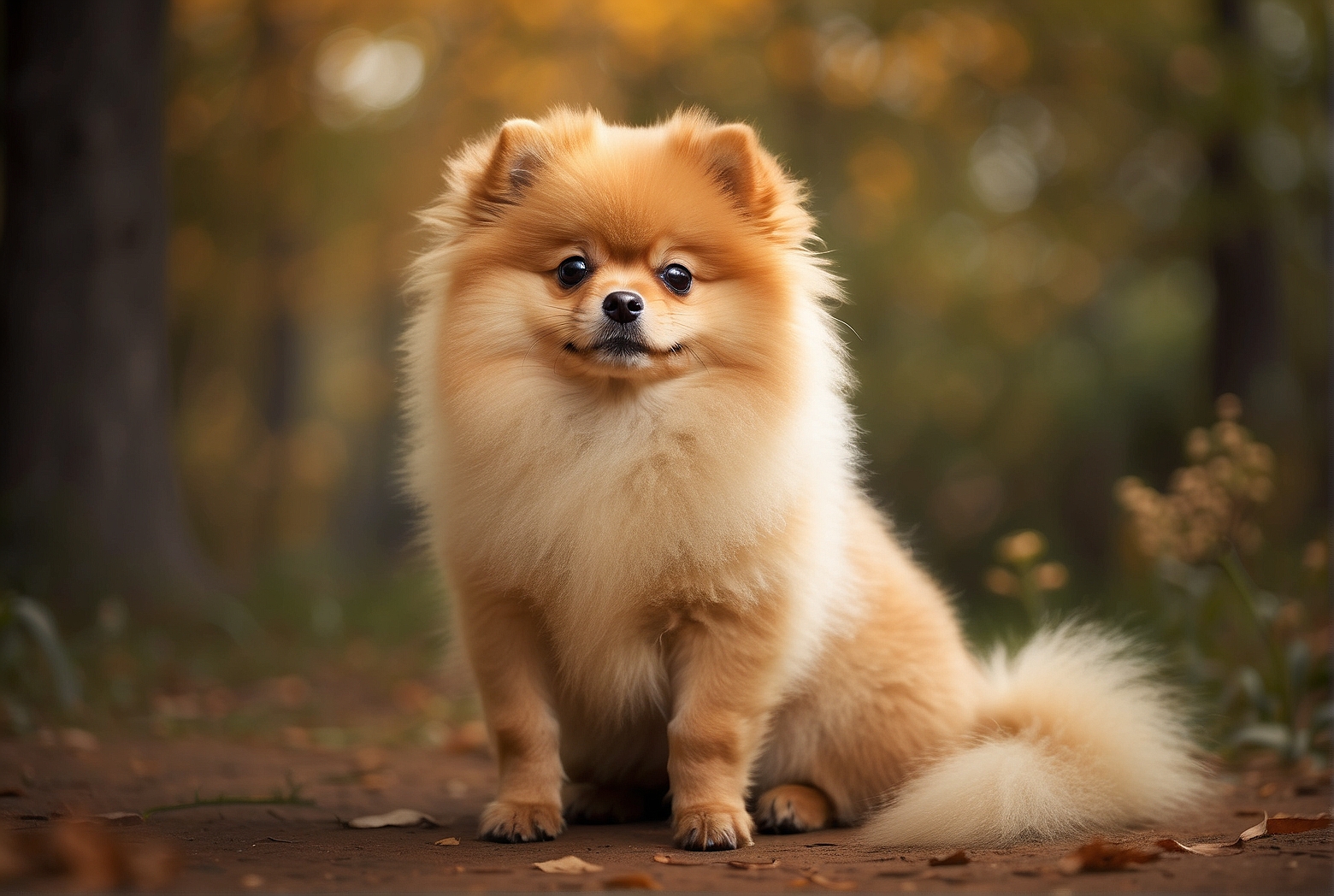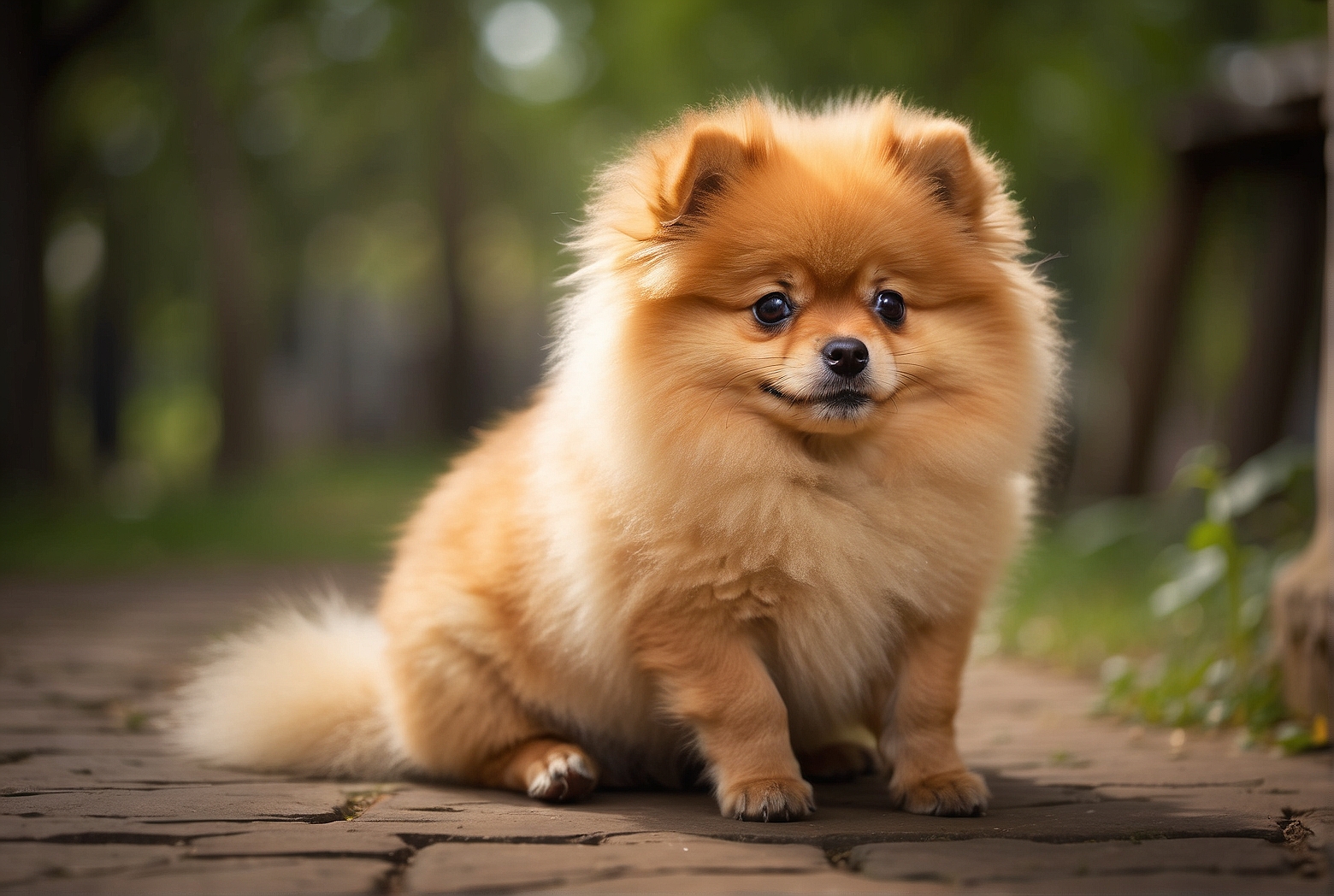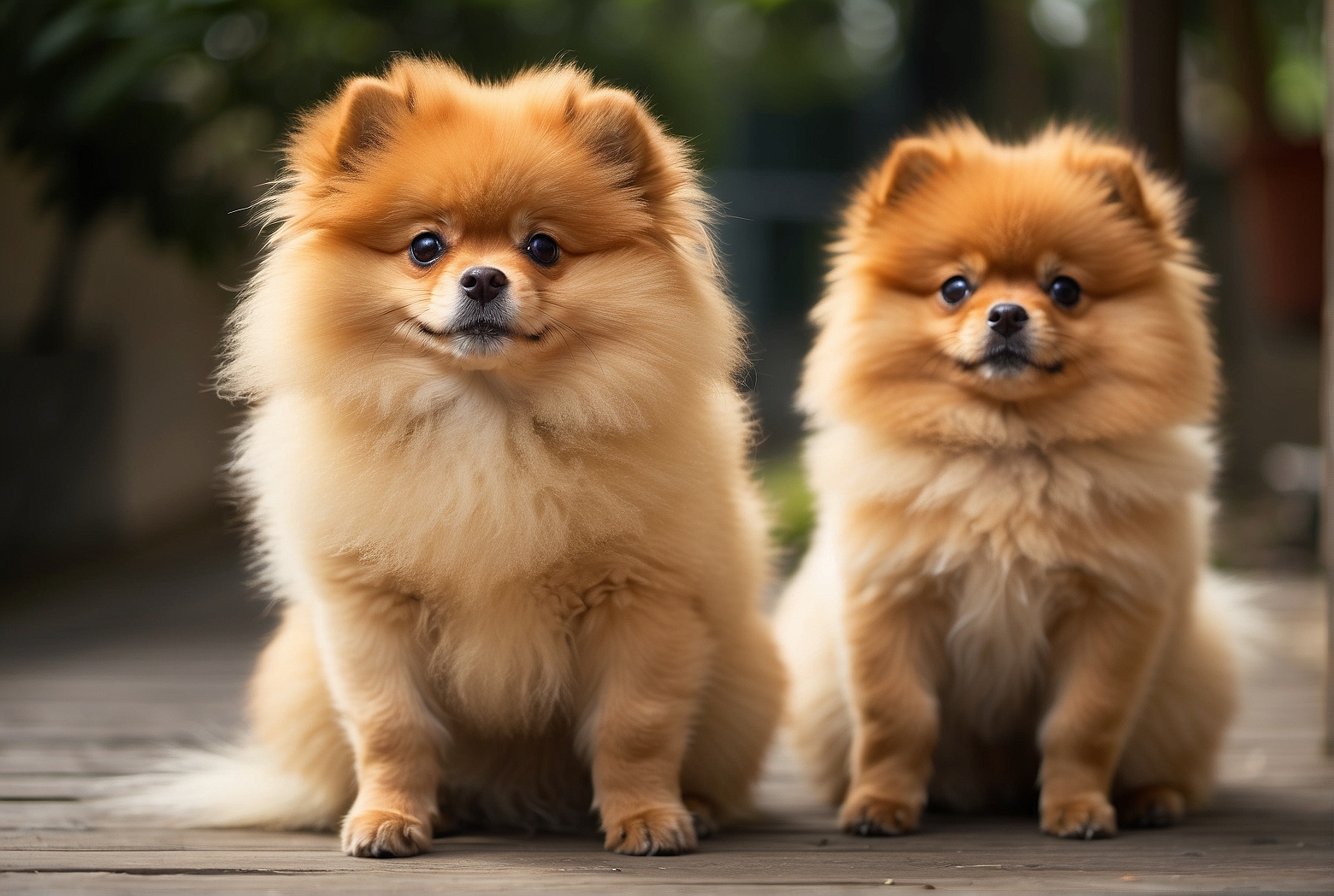Have you ever wondered how big Pomeranians can grow? If you’ve ever seen a Great Dane, you may be curious to know how these little fluffy dogs compare in size. Pomeranians, known for their adorable appearance and lively personalities, may surprise you with their growth potential. While they may start as tiny furballs, Pomeranians can actually reach a certain height that might amaze you. Let’s explore just how big these pint-sized pups can get.
Physical Characteristics
Size and Weight
Pomeranians are small-sized dogs, known for their compact build. As an adult, a Pomeranian typically stands between 6 to 7 inches tall at the shoulder and weighs between 3 to 7 pounds. This petite size makes them a popular choice amongst dog lovers who prefer smaller breeds.
Growth Rate
Pomeranians have a relatively quick growth rate compared to some other dog breeds. Their rapid growth phase starts from birth until they reach around six months of age. During this time, they experience significant physical changes and gradually develop their adult size and weight.
Development Stages
Like all dogs, Pomeranians go through various development stages as they grow. These stages include the neonatal stage from birth to two weeks, the transitional stage from two to four weeks, the socialization stage from four to twelve weeks, and the adolescent stage from twelve weeks to six months. Each stage is crucial for their overall physical and mental development.
Standard Pomeranian Size
Adult Height and Weight
According to breed standards, adult Pomeranians should measure between 6 to 7 inches in height and weigh between 3 to 7 pounds. However, it’s important to note that some individuals may fall slightly outside of this range while still being considered within the breed standard.
Size Variations
Pomeranians come in a variety of sizes, ranging from toy-sized to standard-sized. Toy Pomeranians are at the lower end of the size spectrum, typically weighing around 3 to 4 pounds. Standard Pomeranians, on the other hand, are slightly larger and can weigh up to 7 pounds. These size variations allow potential owners to choose a Pomeranian that matches their preferences and lifestyle.

Breed Standards
Breed standards set guidelines for the ideal physical characteristics of a specific dog breed. For Pomeranians, breed standards outline the desired size, weight, conformation, and other physical attributes that define the breed. A reputable breeder adheres to these standards when selecting breeding pairs, ensuring the quality and consistency of the breed.
Teacup and Miniature Pomeranians
Understanding Teacup Pomeranians
Teacup Pomeranians are often sought after due to their incredibly small size. However, it’s important to understand that teacup Pomeranians are not a recognized breed standard. Instead, they are Pomeranians bred to be significantly smaller than the already petite standard. The term “teacup” is often used for marketing purposes and should be approached with caution.
Size and Weight Differences
Teacup Pomeranians can weigh as little as 2 pounds and stand under 6 inches tall. These tiny dogs are fragile compared to their standard-sized counterparts. Miniature Pomeranians, on the other hand, are usually larger than teacup Pomeranians but smaller than standard Pomeranians. They typically weigh between 3 to 5 pounds and stand around 6 to 7 inches tall.
Health Considerations
The extremely small size of teacup Pomeranians can lead to health concerns. They may be prone to a variety of health issues, including fragile bones, dental problems, respiratory issues, and a higher risk of injuries. Due to their delicate nature, it’s crucial to provide extra care, supervision, and regular veterinary check-ups for teacup Pomeranians.
Factors Influencing Size
Genetics
Genetics play a significant role in determining the size of a Pomeranian. The size of the parents can be an initial indicator of the potential size of their offspring. However, it’s important to understand that while genetics provide a foundation, environmental factors can also influence the final size of a Pomeranian.
Nutrition
Proper nutrition is crucial for a Pomeranian’s growth and development. Providing a balanced diet with appropriate portions of high-quality dog food is essential to support healthy growth. Overfeeding or underfeeding can have negative consequences on a Pomeranian’s size and overall health, so consulting with a veterinarian for dietary advice is recommended.

Exercise
Regular exercise is essential for maintaining a Pomeranian’s overall health and weight. Engaging in physical activities, such as daily walks or play sessions, not only helps prevent obesity but also supports optimal growth and muscle development. It’s important to find a balance and avoid over-exercising a Pomeranian, especially during the rapid growth phase.
Growth Chart
Puppy Growth Phases
Pomeranian puppies go through several distinct growth phases. Initially, they experience rapid growth during the neonatal and transitional stages. As they enter the socialization stage, their growth rate begins to slow down. Finally, during the adolescent stage, the growth rate becomes more consistent, leading to the development of their adult size.
Expected Size at Different Ages
At around 8 weeks old, a Pomeranian puppy may weigh between 1 to 2 pounds and stand around 4 to 5 inches tall. By 6 months of age, they typically reach about half of their adult size and weight. However, it’s important to note that individual growth rates can vary, and each Pomeranian may grow at their own pace.
Physical Milestones
Throughout their growth journey, Pomeranians achieve several physical milestones. These milestones include the opening of their eyes and ears, the development of their baby teeth, the onset of coat changes, and the gradual transition to an adult coat. Observing these milestones can provide insights into a Pomeranian’s development and overall health.
Comparisons with Other Dog Breeds
Pomeranian vs. Great Dane
When comparing Pomeranians to Great Danes, it’s clear that size is a significant contrast. Great Danes are known for their giant stature, standing at an average height of 28 to 32 inches and weighing between 110 to 175 pounds. In contrast, Pomeranians are miniature dogs, with a height range of 6 to 7 inches and a weight range of 3 to 7 pounds. Their size difference is remarkable, making them distinct breeds with varying care requirements.
Pomeranian vs. Chihuahua
Pomeranians and Chihuahuas are both small dog breeds but differ in size and appearance. While both breeds share a similar height range, Pomeranians generally have a higher average weight compared to their Chihuahua counterparts. Pomeranians typically weigh between 3 to 7 pounds, whereas Chihuahuas weigh between 2 to 6 pounds. Additionally, Pomeranians tend to have a more abundant and plush coat compared to the short-coated Chihuahuas.
Pomeranian vs. Shih Tzu
Pomeranians and Shih Tzus are both small-sized breeds with distinct physical characteristics. Pomeranians stand at around 6 to 7 inches tall, while Shih Tzus are slightly taller, with an average height of 9 to 10.5 inches. In terms of weight, Pomeranians typically range from 3 to 7 pounds, while Shih Tzus can weigh between 9 to 16 pounds. Each breed has its own unique traits, making them appealing choices for different types of dog owners.
Size Importance for Owners
Suitability for Apartments
Pomeranians, with their small size, can be an excellent choice for apartment living. Their compact stature allows them to adapt well to smaller living spaces, as long as they receive regular exercise to meet their energy needs. However, it’s important to note that Pomeranians, like any other breed, still require mental stimulation and social interaction, even in an apartment setting.
Travel Considerations
The size of a Pomeranian can greatly influence travel considerations. Since they are small, they are generally more manageable to transport in cars, planes, or other means of transportation. Their petite size also enables them to fit comfortably in travel carriers or crates, ensuring their safety and comfort during journeys.
Handling and Care
Due to their small size, Pomeranians are easier to handle and care for compared to larger dog breeds. This can be particularly advantageous for elderly or less physically capable individuals who may struggle with the physical demands of caring for a larger dog. Pomeranians are more manageable to bathe, groom, and provide general care, making them an appealing choice for many dog lovers.
Size and Personality
Temperament Characteristics
While size can influence a dog’s overall temperament, it is not the sole determining factor. Pomeranians, regardless of their size, are known for their lively, intelligent, and extroverted personalities. They are often confident and boast a spirited nature. However, it’s essential to nurture and socialize Pomeranians from an early age to ensure they develop positive behavioral traits regardless of their size.
Socialization and Training
Regardless of a Pomeranian’s size, socialization and training are crucial aspects of their development. Properly socializing them with other dogs, animals, and humans helps them grow into well-rounded individuals who feel confident in various environments. Consistent training allows them to learn commands, proper behavior, and manners, ensuring a harmonious relationship with their owners.
Size and Behavior
Size can influence a Pomeranian’s behavior to some extent. Some smaller Pomeranians may display traits like excessive barking or being territorial, which is often attributed to their protective nature. However, behavior variations within the breed can be influenced by genetics, early socialization, training, and individual personality, rather than size alone.
Caring for Different Sizes
Feeding Guidelines
Feeding Pomeranians of different sizes requires careful consideration. While nutritional needs may vary slightly, it’s important to provide a balanced diet tailored to their specific energy requirements. Age, weight, activity level, and individual metabolism should be taken into account when determining the appropriate portion sizes and types of food to ensure their overall health and wellbeing.
Exercise Requirements
The exercise needs of Pomeranians vary depending on their size. Generally, Pomeranians, regardless of their size, require daily exercise to prevent obesity, stimulate their minds, and fulfill their natural instincts. A combination of short walks, playtime, and mental stimulation activities is usually sufficient to keep them healthy, happy, and mentally stimulated.
Grooming Needs
Grooming needs for Pomeranians can be influenced by their size, particularly concerning coat care. All Pomeranians have a double coat consisting of a soft undercoat and a longer, outer coat. Regular brushing is essential to prevent matting and keep their coat healthy and shiny. Smaller Pomeranians may be more manageable during grooming sessions due to their size, making it easier to maintain their coat.
Health Implications
Health Issues Related to Size
Different sizes of Pomeranians may be prone to certain health issues. Smaller Pomeranians, such as teacup or miniature varieties, may be more susceptible to fragile bones, dental problems, heart issues, and respiratory disorders due to their tiny frames. Standard-sized Pomeranians, while generally healthier, can still experience common breed-related health concerns, such as dental disease, patellar luxation, and eye problems. Regular veterinary check-ups are crucial to identify and address any potential health issues.
Screening for Disorders
Regardless of a Pomeranian’s size, regular health screenings should be a priority. Screening tests can help identify potential genetic disorders or health concerns early on. Common screenings for Pomeranians include hip evaluations, eye examinations, cardiac evaluations, and DNA testing for specific genetic conditions. Following recommended health screenings ensures the overall wellbeing of your Pomeranian, regardless of their size.
Maintaining Optimal Health
Maintaining optimal health in Pomeranians of different sizes requires similar care practices. Providing a balanced diet, regular exercise, mental stimulation, and routine veterinary care are essential for their overall wellbeing. Regular grooming, proper dental care, and monitoring their weight are also crucial to preserve their health and minimize the risk of health issues related to size. By prioritizing their health, you can ensure your Pomeranian leads a happy and healthy life, regardless of their size.
